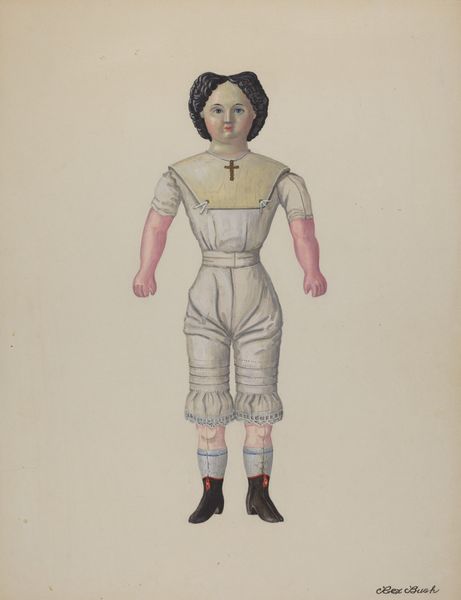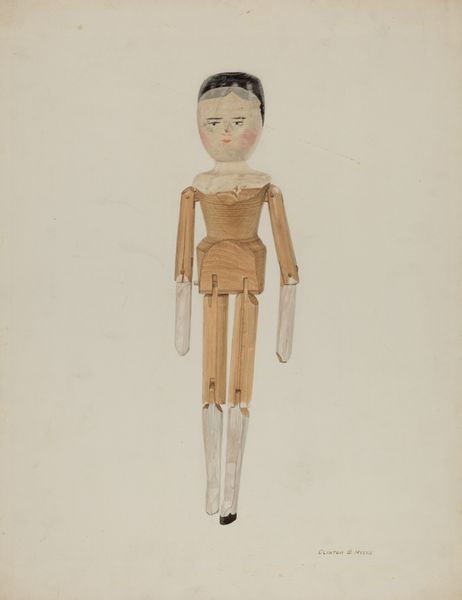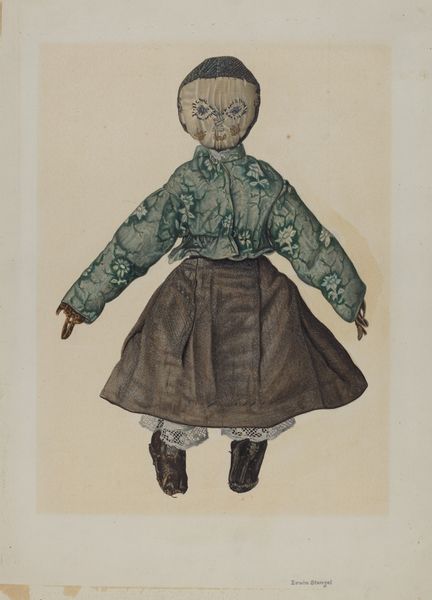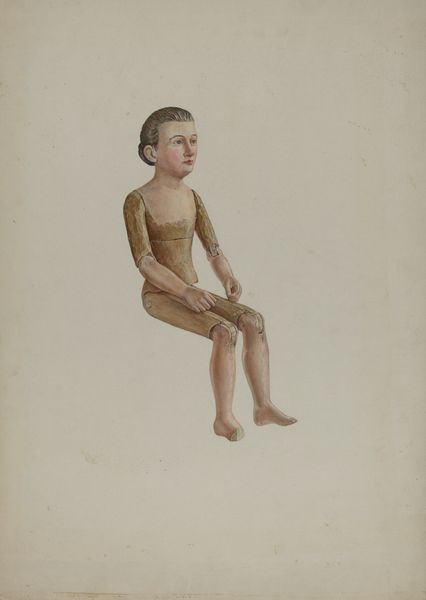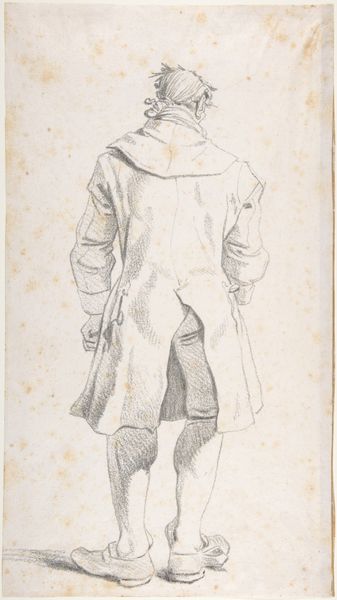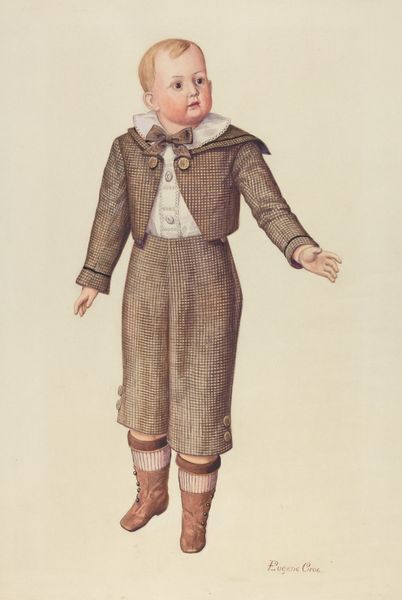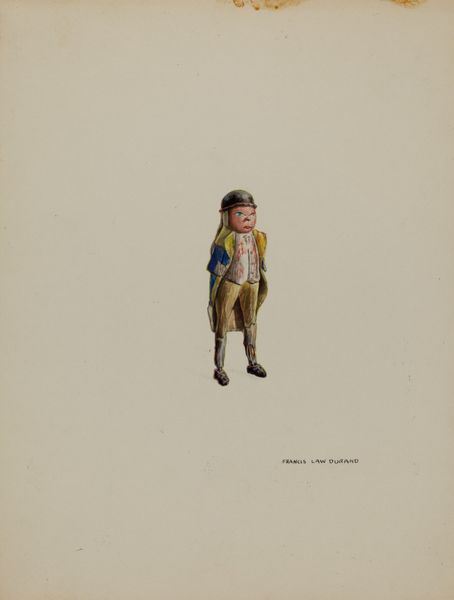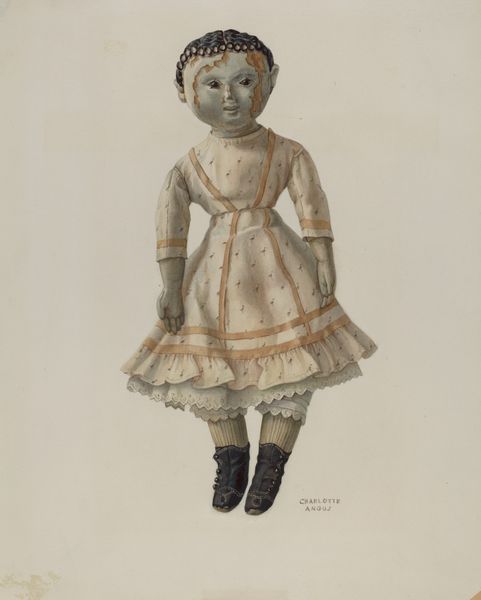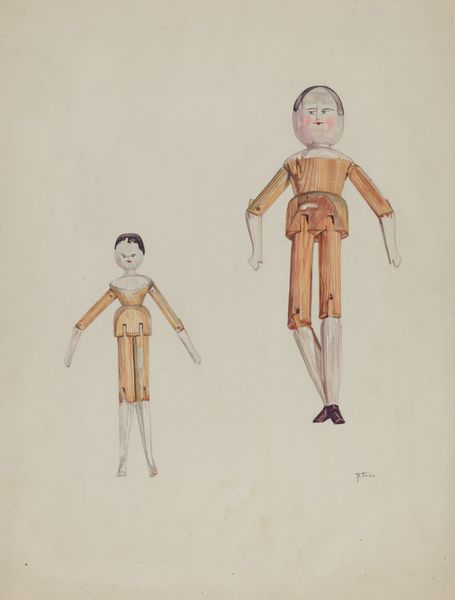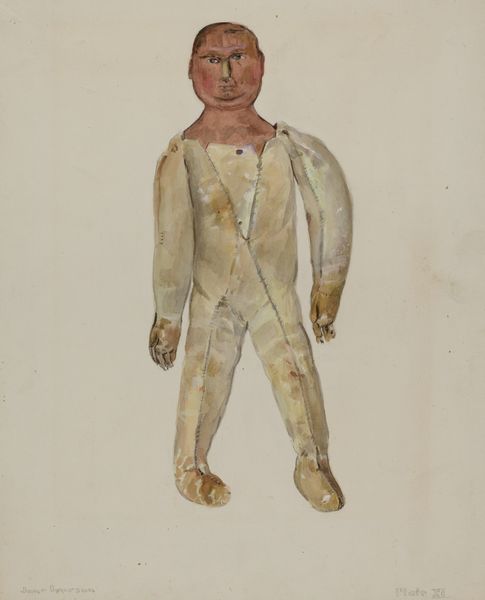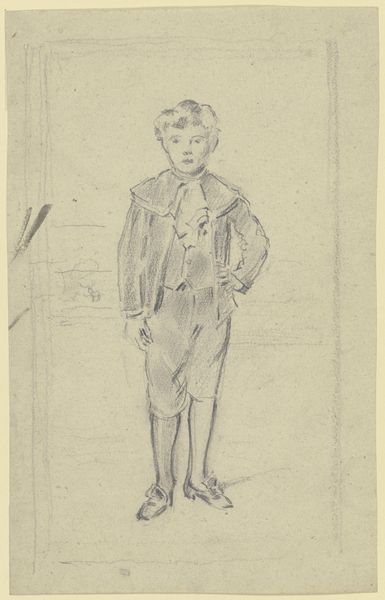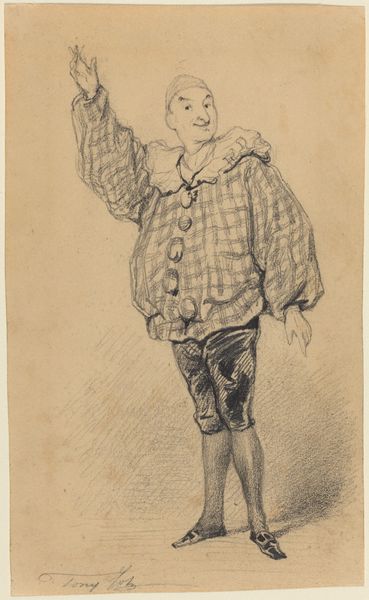
drawing, coloured-pencil
#
portrait
#
drawing
#
coloured-pencil
#
coloured pencil
#
watercolor
#
realism
Dimensions: overall: 50.9 x 38.3 cm (20 1/16 x 15 1/16 in.) Original IAD Object: 11" high
Copyright: National Gallery of Art: CC0 1.0
Curator: This drawing is titled "Doll with Bisque Head", created around 1937 by Dorothy Harris. It employs colored pencil to capture a remarkable level of detail. Editor: There's something undeniably unsettling about this work, a quiet eeriness. The way the doll's gaze is rendered...it's not quite vacant, but definitely distant, disconnected. Curator: Well, considering the period it was made, we can read it as a representation of constructed femininity. The bisque doll, already an artificial figure, is further mediated through Harris’ artistic rendering, which speaks volumes about the limitations imposed on women. Editor: Absolutely, it is quite an example of imposed standards. What interests me more, from a social perspective, is how this mirrors children’s lives at that time. The doll embodies childhood ideals. Curator: Looking closely at the craftsmanship, Harris is precise in her execution but not completely photorealistic, she shows seams in her costume. Her focus allows a space to consider questions regarding performance and mimicry, how girls are socialized. The doll as both an object and an aspirational figure becomes visible. Editor: Do you think her art sought to reveal something beyond societal constructs? Was Dorothy Harris involved in a feminist artistic milieu during this time? Did she feel there were limitations imposed upon herself? Curator: The question is interesting as Harris herself can be further explored in biographical research and also archival details to gain more insight. But the image functions on its own as a study of vulnerability and also silent resistance. We see that the doll cannot voice, is still posed, awaiting instruction... awaiting life. Editor: So true. It makes us reflect on how we all create meaning, giving symbolic value to otherwise commonplace figures or subjects. Curator: The work prompts us to reflect not just on the period in which it was created, but also on the persistent, underlying tensions between artifice and reality, control and freedom. Editor: Precisely, a somber reflection through the prism of childhood and representation. Thanks for bringing this insightful interpretation.
Comments
No comments
Be the first to comment and join the conversation on the ultimate creative platform.
